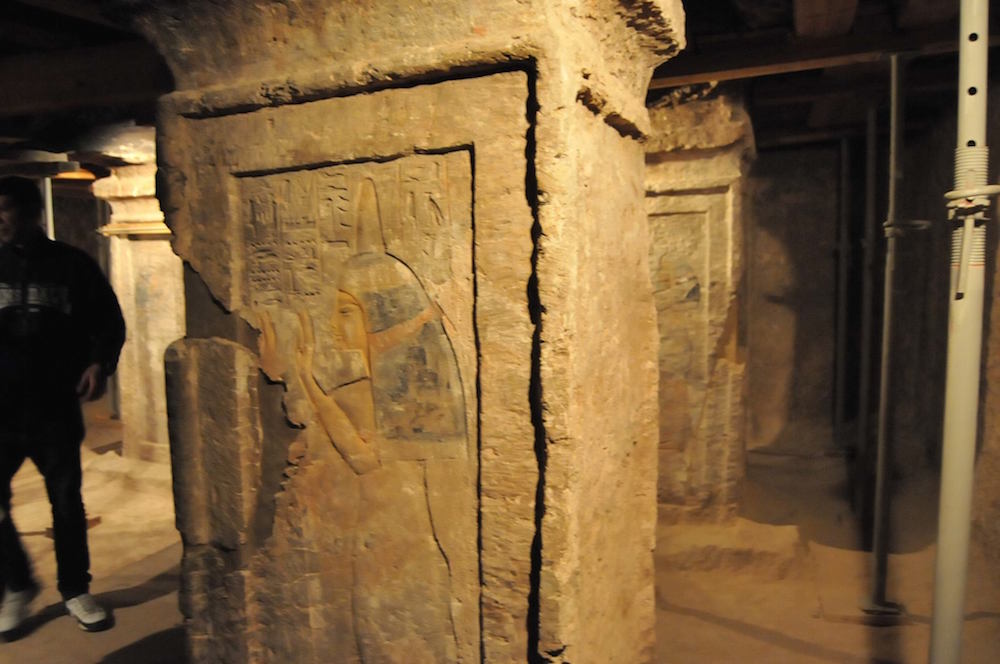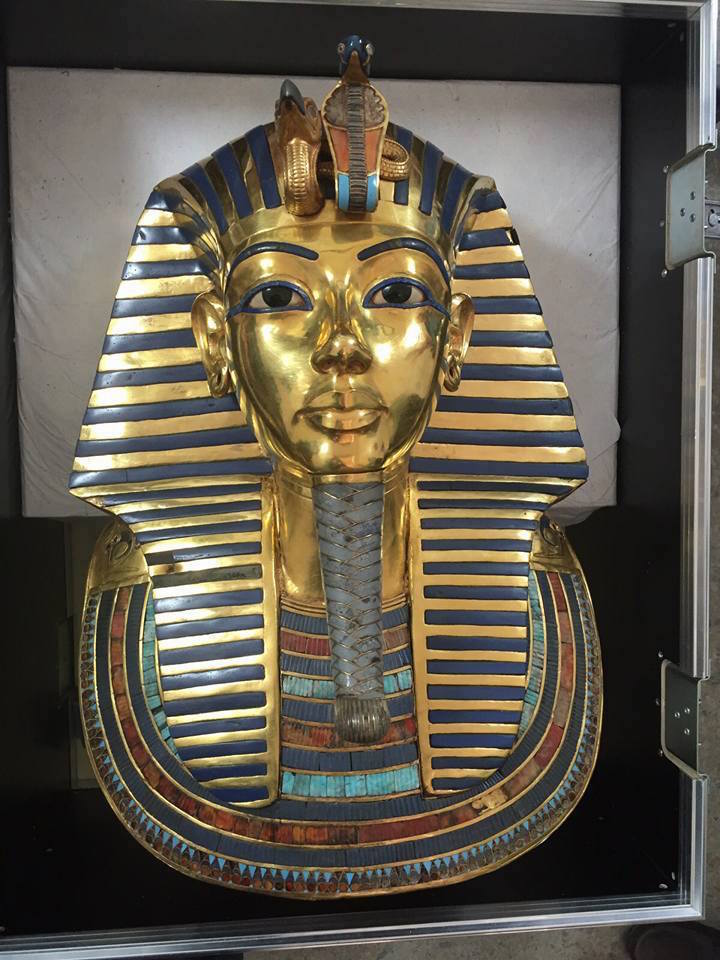King Tut's Half Sister May Have Nursed Him, Carving Suggests

Egypt's famous "boy king," the pharaoh Tutankhamun, may have suckled at the breast of his half sister during his infancy, new research finds.
The announcement comes on the heels of a cleaning and analysis of the tomb of Maia (or Maya), King Tut's wet nurse. Researchers discovered the tomb in 1996 in Saqqara, an ancient burial ground about 19 miles (30 kilometers) south of Cairo, according to a statement posted yesterday (Dec. 20) on the Egyptian Ministry of Antiquities' Facebook page.
In preparation for the public opening of Maia's tomb next month, the ministry organized a cleaning of the space. During this preparation, workers found a potsherd with the title "Great one of the Harim," inscribed on it, Antiquities Minister Mamdouh Eldamaty said in the statement. [In Photos: The Life and Death of King Tut]
This inscription suggests that "Maia wasn't just the private wet nurse of the king," Tutankhamun, but that she held a much higher position, Eldamaty said. Perhaps Maia was actually Meritaten (also spelled Merit Aten), King Tut's half sister, he said.
A burial scene painted on the royal tomb at Tal Al-Amarna (also spelled Tell el-Amarna), an ancient city built by King Tut's father, Akhenaten, shows a portrait of the family. One scene shows the burial of Meketaten, one of King Akhenaten's daughters. Within that scene, Meritaten is shown breast-feeding a baby, who is thought to be Tut, according to the statement.
"Maia is none other than princess Meritaten, the sister or half sister of Tutankhamun and the daughter of Akhenaten and Nefertiti," Alain Zivie, the discoverer of Maia's tomb and director of the French archaeological mission of Bubastis at Saqqara, told the Agence France-Presse (AFP).
Maia's tomb holds more clues about her identity, Zivie said. For instance, there are carvings of Tut and Maia within her tomb, he said.
Get the world’s most fascinating discoveries delivered straight to your inbox.
"The carvings show Maia sitting on the royal throne, and he is sitting on her [lap]," Zivie told the AFP. "The extraordinary thing is that they are very similar. They have the same chin, the eyes, the family traits."
The new finding will help researchers piece together the life story of King Tut, who assumed the throne at about age 10 and ruled Egypt from 1332 B.C. to 1323 B.C. Earlier genetic tests identified Akhenaten as King Tut's father, but the name of his mother remains elusive.
This isn't King Tut's first appearance in the media in recent weeks. The king's funerary mask went back on display at Cairo's Egyptian Museum last week after its beard was reattached with beeswax, and archaeologists are now investigating whether previously overlooked rooms next to Tut's burial chamber contain other tombs, possibly that of Queen Nefertiti, who is thought to be King Tut's stepmother.
Follow Laura Geggel on Twitter @LauraGeggel. Follow Live Science @livescience, Facebook & Google+. Original article on Live Science.

Laura is the managing editor at Live Science. She also runs the archaeology section and the Life's Little Mysteries series. Her work has appeared in The New York Times, Scholastic, Popular Science and Spectrum, a site on autism research. She has won multiple awards from the Society of Professional Journalists and the Washington Newspaper Publishers Association for her reporting at a weekly newspaper near Seattle. Laura holds a bachelor's degree in English literature and psychology from Washington University in St. Louis and a master's degree in science writing from NYU.



